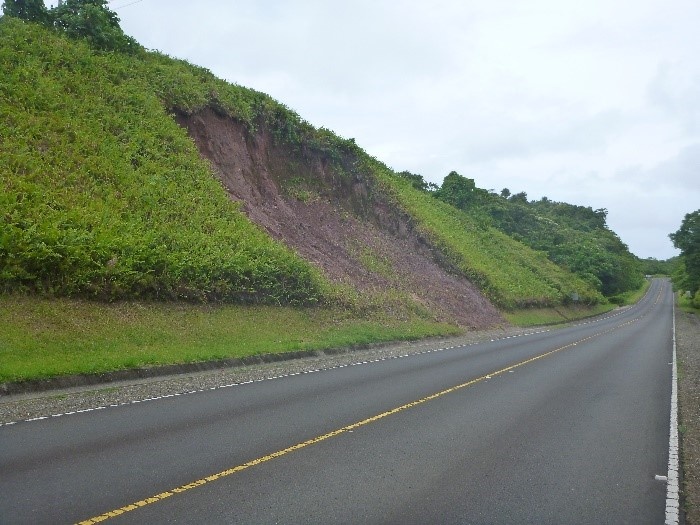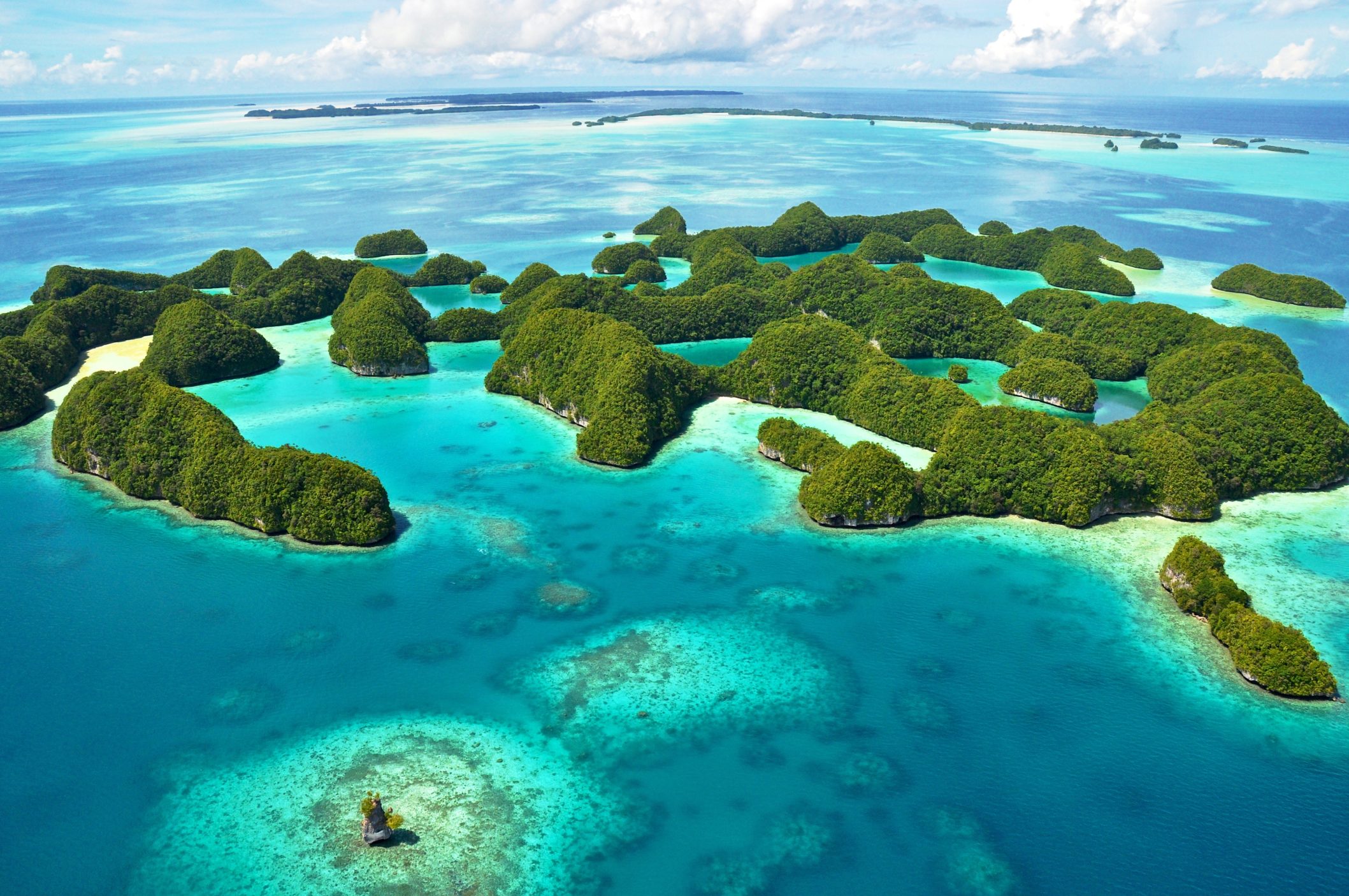Palau’s Energy and Transportation
What are energy and transportation issues?
A majority of the issues that we face globally with energy and transportation are related to pollution. This is because burning fossil fuels (oil, coal, and gas) as an energy source, which many countries do, releases greenhouse gases into the atmosphere.6 These greenhouse gases are released because fossil fuels are fossilized plant and algae species, meaning they are mostly composed of carbon.10 Transportation also is especially mainly fueled by fossil fuels, as are heating and cooling systems, electricity generation, manufacturing, plastics, agriculture (fertilizer and mechanization), and technology.9 This video is a good resource for learning more about how fossil fuels work on a basic level and how they are related to climate change.
In addition to the release of greenhouse gases as fossil fuels are burned, each kind of fossil fuel is associated with its own additional pollution impacts. Oil, for instance, when used for energy generation, uses a lot of water.10 This is because energy is generated by burning oil to heat up steam, which then turns a turbine.10 Watch this process here. Water is then discharged, as well as additionally used in cooling the system if it overheats.10 Moreover, the process creates solid waste like ash, too.3 The process of burning coal for energy is very similar to that of oil, as it also involves water use and creates ash. However, it also contributes to water pollution as heavy metals like arsenic and lead are disposed of in wastewater that is returned to the environment.17 Natural gas is recognized as having less emissions than oil and coal, so it is favorable if fossil fuels must be used for energy.4 Still, it has a widely negative impact because the process of obtaining natural gas, hydraulic fracturing or fracking, can be extremely hazardous to the environment.12 This is due not only to the fact that fracking sometimes releases methane, but also because fracking involves drilling down and then horizontally underground to access natural gas.12 The drilling requires a lubricant, which is a mix of water and unknown chemicals that companies don’t have to disclose, and which often contaminates surrounding water sources.12 Read more about the negative impact of fracking in this article.
In addition to being a threat to the environment, fossil fuels are also a finite resource.8 This means that eventually, we will run out of fossil fuels to burn, as we burn them faster than they can form.8 Luckily, there are many alternative and renewable energy sources aside from fossil fuels that we can move towards using to be more sustainable, such as wind energy, geothermal energy, solar energy, nuclear energy, tidal and wave technology, and more (which you can view here).18 Even so, there is resistance to this transition, due to economic, institutional, cultural, and infrastructural barriers.23
So, what energy and transportation issues does Palau have?
Palau’s power generation and distribution is carried out by the Palau Public Utilities Corporation, or PPUC, which is government-owned.14 A majority of Palau’s energy consumption comes from the commercial sector, although the residential sector is close behind.11 (See Figure 1.) The PPUC connects 98% of Palauan households to a utility grid.14

Over 97% of Palau’s electricity generated by the PPUC is from imported fossil fuels, specifically oil.11 This is detrimental not only to Palau’s environment, but also to Palau as a country, because its access to energy is consequently entirely dependent on global oil price fluctuations.14 This has led to an increase in the price of electricity for Palauan residents, as Palau’s electricity rates are more than twice the average United States residential rate.14 This becomes a social justice issue, as these high rates are even charged to low income families, regardless of whether they can afford it or not, which leads to them having to reduce electricity usage. Furthermore, 20.06% of Palau’s generated electricity is lost during transmission and distribution.14
Renewable energy is currently only 4.03% of Palau’s total energy sector.19 But, Palau’s goal is to increase renewable energy generation up to 45% and reach 35% energy efficiency by 2025.14
Transportation both within and across Palau’s islands is rather limited. Asphalt roads exist only in the islands of Koror, Airai, and Melekeok.22 (See Figure 2.) And on those islands, there is no public transportation system.13 Instead, there are car rental companies and taxis.13 Many Palauan residents actually travel by bicycle.13 And, on the island of Koror, tourists are also able to rent bikes.13 Here is a website of one of the companies in Palau that offers bike rental services. To move from one island to another in Palau, there are both ferries and boats, as well as helicopters and other small aircrafts.16 Because of all of this, combined with the fact that most tourists elect to rent cars when vacationing in Palau, Palau’s transportation sector substantially contributes to the country’s burning of oil for energy.20

Who are the stakeholders?
An environmental stakeholder is “a person with an interest or concern in environmental activities.”4 It is important to identify stakeholders when addressing an environmental problem, because they are the institutions, people, agencies, or organizations that can affect (and are affected by) the problem. In the case of Palau, we must consider those who have a stake in Palau’s energy generation and usage, as well as its methods of transportation. Significant stakeholders are: local Palauans (as they currently are responsible for using a lot of energy within their households,11 and as participation in more sustainable energy projects in Palau could significantly reduce their household expenses for electricity18), Palauan schools (as with more affordable electricity, they could then more frequently use electric fans and lights and utilize technological devices with students, enhancing learning experiences18) (see Figure 3), Palau’s commercial sector (as it is currently the primary consumer of energy in Palau11), the Palau Public Utilities Corporation (as it is in control of Palau’s energy generation and distribution14), the Palau Energy Administration (as it oversees and regulates Palau’s energy usage14), and the Energy Transition Initiative (which is run by the U.S. Department of Energy and helps provide countries such as Palau with guidance and resources necessary for transitioning to clean energy and reducing their reliance on fossil fuels14).

What are the solutions?
One solution to Palau’s energy and transportation issues is legislation that the government of Palau passed called the National Energy Policy of 2010. This policy calls for “improved institutional arrangements; increased energy efficiency; promotion of renewable energy; an effective hydrocarbon sector; and ensuring security, reliability, and efficiency of the electricity supply.”14 It also details ways that it intends to promote renewable energy, such as through a power purchase agreement, renewable energy equipment standards, renewable energy financing, public awareness, and prioritizing renewable energy projects.14 In addition to addressing energy, the policy also encourages “increased vehicle efficiency, efficient modes of transport, and travel demand management.”14
Another solution to Palau’s energy and transportation issues is a renewable energy roadmap that was developed for Palau by the International Renewable Energy Agency (IRENA).24 The roadmap lays out the steps that Palau must take as a country to work towards reaching 92.1% of its electricity generation coming from renewable resources by 2050.24 Some of these steps include exploring green hydrogen production from solar photovoltaics and wind energy development.24 This involves installing more wind turbines, in addition to battery storage systems.24 The roadmap even suggests how Palau can fund these changes, through the use of grants, soft loans, and independent power producers, supported by climate finance.24 In the process of moving towards renewable energy, following the roadmap also enables Palau to reduce its pollution and greenhouse gas emissions, as well as to meet its climate goals.24
A third solution to Palau’s energy and transportation issues is Executive Order No. 449, which was signed into law in 2021 by Palau’s current president, Surangel Whipps, Junior.24 The order establishes the Project Steering Committee for the Palau Public Utilities Corporation (PPUC) Reform Program.24 The PPUC Reform Program is meant to improve governance and management over the PPUC as it controls Palau’s electricity and water.15 The program itself, though, did not detail any practical specifics for its implementation, which is why Executive Order No. 449 was passed. The order established a committee that was comprised of Palau’s Minister of Finance; Palau’s Minister of Public Infrastructure and Industries; the Director of the Palau Energy Administration; the CEO of the PPUC; the Chair of Palau’s House of Delegates Committee on Energy, Communication, and Transportation; and the Chair of Palau’s Senate Committee on Energy, Public Utilities, and Telecommunication.7 The committee’s responsibilities as detailed in the order are to give “strategic direction and oversight” to the PPUC, monitor and report on the PPUC’s progress, hold meetings to make sure the PPUC’s work is efficient, and ensure all loan requirements for the PPUC are satisfied.7
Are there any barriers to these solutions?
There are a few barriers to Palau’s National Energy Policy of 2010. The first is funding, as it does not identify how the changes that the policy calls for, such as the promotion of renewable energy, can be afforded by Palau’s government.14 Another barrier is that should there be appropriate funding, there are still financing risks and uncertainties associated with a transition from fossil fuels to renewable energy.1 What’s more, the technological changes required to support what the policy calls for, such as increased energy efficiency, an effective hydrocarbon sector, and increased vehicle efficiency, are also associated with performance uncertainty and risk.1
The Republic of Palau Renewable Energy Roadmap also has a few barriers. Foremost, owing to its low per-capita income, Palau needs financial and technical assistance from international allies to fully implement the renewable projects that the roadmap describes.1 An increase in the development and installation of battery storage systems is also a barrier, as such battery technologies have a limited capacity and lifespan, as well as being environmentally costly due to the sourcing and disposal of resources that they require.21 Read more about the downside to using batteries for energy storage here.
Executive Order No. 449 faces logistical issues as its predominant barrier. Although the order establishes a committee meant to regulate the PPUC and its inner workings, it does not go into sufficient detail regarding the criteria based upon which the committee should be making its decisions.7 The committee’s duty, for example, to monitor and report on the PPUC’s progress, is ambiguous as the order does not define what sufficient progress would look like.7 The order also does not state what the consequences would be should the PPUC fail to meet the standards that the committee holds it to.7
So, are these solutions sustainable?
The definition of sustainability that I will use for this analysis is outlined in my Place-Based Project Essay. Please click here to view this definition.
Palau’s National Energy Policy of 2010 is an adequately sustainable solution. This is largely because of how it aims to promote renewable energy over fossil fuels, such that the “social and economic needs of present and future generations” will still be met, as the definition requires, by ensuring the “security, reliability, and efficiency of the electricity supply” in Palau.14 By advancing a means through which Palau can move as a country towards renewable sources of energy, the policy also serves to “reduce pollution, [and] support climate change mitigation and/or adaptation.”14 Finally, the policy is “based on the growing body of scientific information,” which the definition also posits, as it prioritizes the promotion of new renewable energy technology.14
According to our definition, the Public of Palau Renewable Energy Roadmap is a relatively successful sustainability effort. It does seek to protect Palau’s environment by reducing pollution and greenhouse gas emissions, in addition to meeting its climate goals. This directly meets the definition’s standard of “reduc[ing] pollution [and] support[ing] climate change mitigation and/or adaptation.” On top of that, the roadmap is also incredibly transparent as to how the changes it lays out can be funded, which the definition asserts is necessary for an effort to be sustainable, too.24 One major drawback to the roadmap, though, is its recommendation for Palau’s dependence on battery storage systems. The sustainability definition states the importance of “protect[ing] and restor[ing] the health of natural systems, preserv[ing] biodiversity, reduc[ing] pollution… and justly protect[ing] human health.” But, unfortunately, battery storage systems generate considerable amounts of environmental pollutants, including hazardous waste, toxic gases, and the very greenhouse gas emissions that renewable energy sources are trying to avoid, obviously going against the definition.5
Lastly, Executive Order No. 449 pretty sufficiently meets our criteria for sustainability. First and foremost, this is because of the great “diversity of stakeholders” that the order involves to form the committee.7 This alone meets one of the definition’s criteria. Having said that, these stakeholders are also employed in a variety of areas, from finance to energy administration, meeting the definition’s call for considering the “intersectional nature of sustainability.”7 One way that the order does not align with the definition is its lack of mentioning measurable indicators, as it directs the committee to monitor and report on the PPUC’s progress and efficiency, but it does not define what that progress and efficiency should look like.7
What assets does Palau have regarding these solutions?
Assets that are mentioned in the National Energy Policy of 2010, the Republic of Palau Renewable Energy Roadmap, and Executive Order No. 449 include: the Palauan government,14 the International Renewable Energy Agency (IRENA),24 Palau’s president Surangel Whipps, Junior, the Project Steering Committee for the Palau Public Utilities Corporation Reform Program,24 Palau’s Ministry of Finance,7 Palau’s Ministry of Public Infrastructure and Industries,7 Palau’s Energy Administration,7 the Palau Public Utilities Corporation (PPUC),7 Palau’s House of Delegates Committee on Energy, Communication, and Transportation,7 and Palau’s Senate Committee on Energy, Public Utilities, and Telecommunication.7
These assets, along with many others, can be viewed here in my asset map.
References
1Beck, F., Renewable Energy Policy Project, Martinot, E., & Global Environment Facility. (2004). Renewable energy policies and barriers. In C. J. Cleveland (Ed.), Encyclopedia of Energy. Academic Press/Elsevier Science. https://biblioteca.cejamericas.org/bitstream/handle/2015/3308/Renewable_Energy_Policies_and_Barriers.pdf?sequence=1&isAllowed=y#:~:text=Barriers%20include%20subsidies%20for%20conventional,costs%2C%20and%20a%20variety%20of
2Center for Climate and Energy Solutions. (2020, July 13). Natural Gas – Center for Climate and Energy Solutions. https://www.c2es.org/content/natural-gas/#:~:text=Combustion%20of%20natural%20gas%20emits,per%20unit%20of%20energy%20delivered.
3Communication. (2017, October 19). Lubrication Management » Excessive ash deposits on gas engines. https://lubrication-management.com/en/2017/10/19/excessive-ash-deposits-on-gas-engines/#:~:text=The%20ash%20is%20composed%20of,burned%20during%20the%20engine%27s%20operation.
4Community Environmental Health. (2023, December 11). Environmental stakeholder inclusion. https://www.in.gov/idem/health/environmental-stakeholder-inclusion/#:~:text=An%20environmental%20stakeholder%20is%20a,agency%27s%20Nondiscrimination%20Policy%20%5BPDF%5D
5Dehghani-Sanij, A., Tharumalingam, E., Dusseault, M. B., & Fraser, R. (2019). Study of energy storage systems and environmental challenges of batteries. Renewable & Sustainable Energy Reviews, 104, 192–208. https://doi.org/10.1016/j.rser.2019.01.023
6Electricity in the U.S. – U.S. Energy Information Administration (EIA). (n.d.). https://www.eia.gov/energyexplained/electricity/electricity-in-the-us.php#:~:text=Fossil%20fuels%20are%20the%20largest%20sources%20of%20energy%20for%20electricity%20generation
7Executive Order No. 449. (2021, June). Palau Gov. https://www.palaugov.pw/wp-content/uploads/EO-449-PPUC-Steering-Committee.pdf
8Fossil. (n.d.). Energy.gov. https://www.energy.gov/fossil#:~:text=Fossil%20energy%20sources%2C%20including%20oil,buried%20by%20layers%20of%20rock.
9Fossil fuels. (n.d.). https://www.gsi.ie/en-ie/education/earth-resources/Pages/Fossil-fuels.aspx#:~:text=Fossil%20fuels%20are%20used%20to,also%20used%20to%20power%20engines.
10Fossil fuels: The Dirty Facts. (2024, March 26). https://www.nrdc.org/stories/fossil-fuels-dirty-facts
11Healey, V., Beshilas, L., & Coney, K. (2020). Energy Snapshot – Palau. In National Renewable Energy Lab. (NREL), Golden, CO (United States). https://www.osti.gov/servlets/purl/1659907
12Horton, M. (2023, April 17). How does fracking affect the environment? Investopedia. https://www.investopedia.com/ask/answers/011915/what-are-effects-fracking-environment.asp#:~:text=Fracking%20has%20been%20blamed%20for,contaminated%20and%20affect%20local%20groundwater.
13Palau Explorer. (2024, February 5). Is there Inter-Island transportation in Palau? https://palaugov.net/is-there-inter-island-transportation-in-palau/
14Palau Public Utilities Corporation. (2013). Energy Snapshot. In Palau. https://www.nrel.gov/docs/fy15osti/64291.pdf
15Palau Public Utilities Corporation Reform Program (Subprogram 2). (n.d.). Early Warning System. https://ewsdata.rightsindevelopment.org/projects/54151-003-palau-public-utilities-corporation-reform-program/
16Pristine. (2024, January 19). Getting around. Pristine – Pristine Paradise Palau Consisting of Over 350 Islands in the Pacific. https://pristineparadisepalau.com/getting-around/#:~:text=Peleliu%20and%20Angaur%20States%20are,available%20for%20a%20minimal%20fee.
17Reducing Water Pollution from Power Plants | US EPA. (2023, April 4). US EPA. https://www.epa.gov/perspectives/reducing-water-pollution-power-plants#:~:text=Coal%2Dfired%20power%20plants%20use,contaminate%20our%20vital%20water%20sources.
18Renewable-Based pathway key to Palaus welfare. (2022, June 28). https://www.irena.org/News/articles/2022/Jun/Renewable-Based-Pathway-Key-to-Palaus-Welfare
19Renewable energy. (n.d.). Energy.gov. https://www.energy.gov/eere/renewable-energy#:~:text=Renewable%20energy%20comes%20from%20unlimited,%2C%20natural%20gas%2C%20and%20oil.
20Republic of Palau. (2008). Energy Efficiency Action Plan. http://www.globalislands.net/userfiles/Palau-1.pdf
21The Battery Barrier: Why energy storage is key to a clean power future. (2023, June 27). https://www.tomorrow.bio/post/the-battery-barrier-why-energy-storage-is-key-to-a-clean-power-future-2023-06-4669858665-renewables
22Transportation – Palau – located. (n.d.). https://www.nationsencyclopedia.com/Asia-and-Oceania/Palau-TRANSPORTATION.html
23Unit 2: Renewable energy use in your life. (n.d.). UWSP. https://www3.uwsp.edu/cnr-ap/KEEP/nres635/Pages/Unit2/Section-A-Benefits-of-and-Barriers-to-Renewable-Energy.aspx#:~:text=Barriers%3A%20Solar%20energy%20isn%27t,cloud%20cover%2C%20and%20other%20obstacles.24Vaid, A., & Taibi, E. (2022). Republic of Palau: Renewable energy roadmap 2022-2050. International Renewable Energy Agency. https://www.irena.org/-/media/Files/IRENA/Agency/Publication/2022/Jun/IRENA_Palau_RE_Roadmap_2022.pdf?rev=33953c2e209e4e12a8cb00f7f1590569
